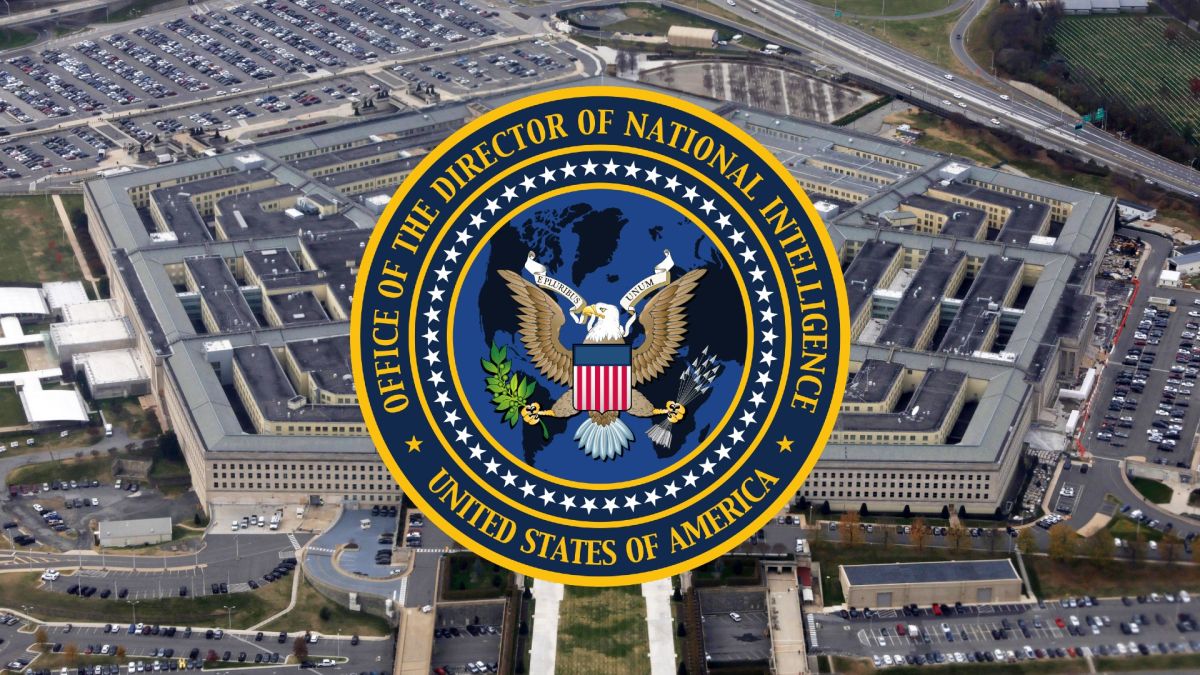Pentagon releases its long-awaited 2022 UFO report

The Pentagon’s long-awaited 2022 report on unidentified aerial phenomena, or UAP, is finally here.
The unclassified “2022 Annual Report on Unidentified Aerial Phenomena” was published by the Pentagon’s Office of the Director of National Intelligence (ODNI) on Thursday (Jan. 12) after a months-long delay. The report was mandated by the 2022 National Defense Authorization Act and was created by ODNI’s National Intelligence Manager for Aviation and the newly-established All-domain Anomaly Resolution Office (AARO). Input was gathered from various intelligence community agencies and military intelligence offices, the Federal Aviation Administration, the National Oceanographic and Atmospheric Administration (NOAA), the Department of Energy (DoE), and NASA.
In all, the report (opens in new tab) covers some 510 cataloged UAP reports gathered from agencies involved in the report and the branches of the United States military. The document notes that the majority of these were gathered from U.S. Navy and U.S. Air Force personnel who reported them through official channels. Ultimately, the unclassified report concludes that, while UAP “continue to represent a hazard to flight safety and pose a possible adversary collection threat,” many of the reports “lack enough detailed data to enable attribution of UAP with high certainty.”
Related: Pentagon establishes office to track UFOs in space
Out of these 510 total UAP reports, ODNI assessed 366 that had been newly identified since AARO’s creation. Of these, 26 were characterized as uncrewed aircraft systems (UAS), or drones, 163 were attributed to balloons or “balloon-like entities,” and six were found to be airborne “clutter” such as birds or airborne plastic shopping bags.
That leaves 171 reported UAP sightings that remain “uncharacterized and unattributed,” according to ODNI’s report. “Some of these uncharacterized UAP appear to have demonstrated unusual flight characteristics or performance capabilities, and require further analysis,” the report adds.
While there are no definite Earth-shattering conclusions about the origins of the UAP (as unidentified flying objects, or UFOs, have recently been rebranded) seen in the incidents analyzed in ODNI’s unclassified report, the document highlights a growing emphasis on airspace safety, prompted in part by the recent proliferation of drones — some of which might represent intelligence-gathering efforts by the United States’ adversaries.
RELATED STORIES:
“UAP events continue to occur in restricted or sensitive airspace, highlighting possible concerns for safety of flight or adversary collection activity,” ODNI states in the report, adding that the agency continues “to assess that this may result from a collection bias due to the number of active aircraft and sensors, combined with focused attention and guidance to report anomalies.”
In other words, military aviators in controlled airspace may be reporting more UAP/UFOs in these areas because there are naturally more sensors scanning the skies around military facilities and training ranges.
Additionally, the report notes that factors such as weather conditions, lighting and atmospheric effects can affect the observation of presumed UAP. The office therefore operates “under the assumption that UAP reports are derived from the observer’s accurate recollection of the event and/or sensors that generally operate correctly and capture enough real data to allow initial assessments.”
However, the report notes that some of the cataloged UAP incidents covered in the report may have been caused by operator or equipment error or faults with the sensors used that detected UAP in these events.
“It is clear that there is an urgent and critical need to improve aerospace safety by dedicating scientific research into UAP,” said Ryan Graves, former Navy F/A-18 pilot and chair of the American Institute of Aeronautics and Astronautics’ Unidentified Aerospace Phenomena Integration & Outreach Committee (UAPIOC), in a statement following the release of the ODNI’s report. “We must stop unscrupulous speculation, break stigma, and invest in science to address this national safety threat,” Graves added.
While improving flight safety in both domestic and military airspace is the principal motivation underlying the creation of the report, the document notes that “there have been no reported collisions between U.S. aircraft and UAP” to date. Furthermore, there have also been no UAP encounters “confirmed to contribute directly to adverse health-related effects to the observer(s),” contrary to many claims made in recent years (opens in new tab).
While far from a smoking gun of any kind, the ODNI’s report shows that the U.S. government appears to be taking UAP and airspace safety issues seriously following years of media sensationalism surrounding a handful of highly publicized encounters reported by U.S. Navy aviators in training ranges off the coast of Southern California.
To date, the Pentagon asserts that these cases remain unexplained.
Editor’s note: This story was updated at 4:30 p.m. EST on Jan. 12 to include statements from Ryan Graves.
Follow Brett on Twitter at @bretttingley (opens in new tab). Follow us on Twitter @Spacedotcom (opens in new tab) or on Facebook (opens in new tab).


